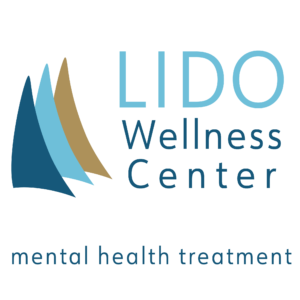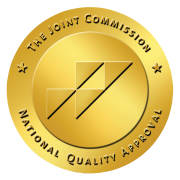Distress Tolerance and Emotional Regulation
Stress. We all feel it. We all have it. While it may have been cyclical in the past, stress has become a 24/7 problem. With our electronic devices we have access to “anything and everything” and that means 24×7 news and information, social media posts, non-stop emails at the touch of a button – all of it disrupting our here-and-now and keeping us “always on.” As the stressors in the world are increasing so are the number of individuals who are being negatively affected by them. As a result, our nervous system is more readily activated, and depending upon our distress tolerance and emotional regulation, some of us are more affected than others. 
What Is Distress Tolerance?
Distress tolerance refers to the ability of an individual to manage emotional distress – whether it is an actual stressful situation or one that is perceived to be. Distress tolerance also refers to the ability of someone to navigate through an emotional incident without making it worse on themselves – such as reliance on an addictive substance, becoming severely withdrawn or even becoming violent. Individuals with low tolerance are easily overwhelmed by situations and turn to unhealthy ways of coping or reacting. A low tolerance for stress is also known as a narrow “window of tolerance.”
For some individuals, daily life provides a vast range of annoyances that are outside their window of tolerance — some may be as minor as uncontrolled impatience with computer issues in the office, to facing major events such as the serious illness of a loved one, or a job change or loss. Learning how to manage stressors first starts with understanding that stressful events will not go away. We’re always going to face stress, so understanding how to increase our stress tolerance and widen the window of tolerance to emotionally regulate our nervous system is important to decrease our stress and live a more peaceful, balanced life.
The Window of Tolerance
The window of tolerance is a concept that describes the range within our psychological and physiological optimal state that allows us to manage stressors. How to Help Your Clients Understand Their Window of Tolerance (nicabm.com)
First described in 1999 by psychiatrist Dr. Dan Siegel, the model’s middle zone (window of tolerance) is when individuals are neither hyper vigilant/hyper-aroused or the opposite – hypo-aroused. That middle ground is where individuals are able to emotionally self-regulate and tolerate emotions and tap into coping skills when life presents challenges. This zone is where we are alert, present and engaged without being anxious, and relaxed without being fatigued or numb. Being in that optimal range allows individuals to manage the ups and downs of emotions in a balanced and tolerable way. While experiences, pain, anxiety, or disappointment may bring us close to the edges of the window at times, having the ability to stay within the window allows us to have the capability to optimally solve problems.
The Window of Emotional Regulation
Individuals who have experienced trauma in their lives may have a narrower window of tolerance and find themselves in a place where they can’t find peace and calm, or on the other end of the spectrum, they may shut down completely and disengage to the point of being stoic, frozen, and dissociated from life. For example, when an individual is hyper-aroused and flies off the handle easily, or conversely, they are “checked out” and dissociate as a coping mechanism – both techniques are outside the window of tolerance. They are likely techniques that individuals may have relied on in the past to manage and protect themselves from whatever stressors they’ve been subjected or traumatized by in their lifetime. While trauma and stress can narrow the window, therapy can widen it.
Hypervigilance/hyper-arousal
Individuals who are hypervigilant or hyper-aroused experience their nervous system kicking into high gear. They find themselves in a state of increased alertness, making them hyper-focused on their surroundings and perhaps even on the lookout for hidden dangers that may not exist around them. When individuals are in a state of hyper-vigilance, they’re extremely sensitive to their surroundings and exhibit emotional, physical, and mental symptom such as:
- Severe anxiety
- Fear
- Panic
- Persistent worrying
- Racing thoughts
- Feeling on edge
- Accelerated heart rate
- Rapid, shallow breathing
- Sweating
- Tense muscles
- Clenched jaw
- Overly sensitive to sounds
- Heightened awareness of your surroundings
Hypo-arousal
In a hypo-arousal state, individuals feel drained and out of it – feeling almost passive and numb to the world around them. They likely feel frozen in their thoughts, responses, and actions, and tend to dissociate from their surroundings. They may exhibit symptoms such as:
- Emptiness
- Irritability
- Anger
- Social withdrawal
- Decreased energy
- Loss of appetite
- Fatigue
- Poor memory
- Depersonalization
- Depression symptoms
When individuals experience either hypervigilance or hypo-arousal, the area of the brain responsible for more advanced cognitive function (the prefrontal cortex), slips into a passive hibernation mode which results in impaired problem-solving and decision-making.
Effects of Stress
There are innumerable factors that cause stress. Lifestyle choices – everything from where and how we live, to how demanding or stressful our careers are – all can play a part; family struggles, health issues and most recently pandemic fears, and the resulting isolation, are also factors. Everyday stressors can also build – things like traffic congestion and demands from others; in addition holidays and the expectations that accompany them along with time pressures, also challenge our ability to tolerate distress.
Stress has been with us for generations and will continue to be with us well into the future. And while the source of stress changes with the times, what is most worrisome about distress and our ability to tolerate it is that its effects aren’t just limited to mental health challenges. While the World Health Organization has called stress the health epidemic of the 21st century, it is a constant, and how we face it determines our physical, mental, and emotional wellbeing.
What is the result of having a low distress tolerance? Negative effects on health and well-being include:
| Physical | Mood | Behavior |
| Increased rates of heart attack and hypertension | Anxiety | Drug or alcohol misuse and abuse |
| Obesity | Depression/sadness | Overeating |
| Headaches/migraines | Lack of focus or motivation | Anger outbursts |
| Muscle tension | Restlessness | Use of tobacco |
| Pain | Feeling overwhelmed | Social withdrawal |
| Fatigue | Irritability | Inactivity / Lack of exercise |
| Change in sex drive | ||
| Stomach issues | ||
| Insomnia |
Holistic Healing at Lido
When the effects of stress are negatively impacting your ability to manage and enjoy everyday life, it may be time to proactively take control to widen your window of tolerance. Doing so can bring healing to your body, your mood, and your behavior.
Lido Wellness helps individuals find and expand their window of distress tolerance. Since everyone’s window is not the same, the Holistic Healing program at Lido Wellness was created to understand where each patient is coming from. Individuals who struggle with mental health issues or who have had trauma in their lives may find that their window of tolerance is small. As life happens, they may bounce in and out of their window – from being hypervigilant to feeling depressed and hypo-aroused. Living always hypervigilant or hypo-aroused is not only an unhealthy lifestyle but an unsustainable way to live.
Lido’s Holistic Healing program teaches grounding, resourcing, and orienting techniques to help individuals be more present and in the moment, as well as helping them raise their awareness to recognize within their body when they are feeling distressed or dysregulated. Working with professionals at Lido, individuals find that their window of tolerance begins to open a little bit at a time as they become more present to their everyday life. Lido Wellness patients who complete the program notice that they begin to see life in a different light; they see things that they never noticed before, and most importantly, they find that they’re able to deal with frustrations and everyday annoyances that once used to create high levels of distress.
Other Mental Health Approaches in Orange County
Treatment plans may use other combined and complemented therapies in an integrative mind/body/spirit holistic therapeutic model guided by Lido Wellness Center’s multidisciplinary team using clinical theoretical approaches to help patients increase their distress tolerance including:
- Cognitive-Behavioral Therapy (CBT)
- Dialectical Behavioral Therapy (DBT)
- Somatic Experiencing (SE)
- Eye-movement desensitization and reprocessing (EMDR)
- Acceptance and Commitment Therapy (ACT)
- Integrative Dance-Movement based therapy
- Neuro and Biofeedback
References
Hypervigilance: Symptoms, Causes, and Treatment (healthline.com)
Hyperarousal: Symptoms, Causes, Treatments (healthline.com)
What Is… the Window of Tolerance – Mental Health @ Home (mentalhealthathome.org)
Hypo- and Hyper-arousal – C-PTSD Survival Guide (wordpress.com)
What Is Distress Tolerance? (verywellmind.com)
Stress: The Health Epidemic of the 21st Century | SciTech Connect (elsevier.com)
DeAnna Holloway, LMFT
Somatic Trauma Psychotherapist




